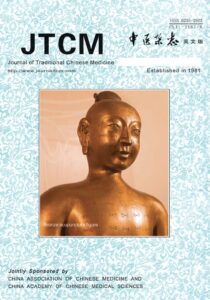Publications

Novel insight into the site-specificity of Hegu (LI4): morphological, biomechanical, and histological analyses
Authors: Umemoto Kanae 1, Xiyao Shan 1, Ishikawa Takuro 1, Watsuji Tadashi 2, Watanabe Yasuharu 2, Naito Munekazu 1
Affiliations:
- Department of Anatomy, Aichi Medical University School of Medicine, Aichi 480-1195, Japan
- Department of Health Promoting and Preventive Medicine, Meiji University of Integrative Medicine, Kyoto 629-0301, Japan
Journal: Journal of Traditional Chinese Medicine - August 2025, Volume 45, Issue 4, Pages 867-872 (DOI: 10.19852/j.cnki.jtcm.2025.04.016)
-
Field & Applications:
- Medical
- Complementary and Alternative Medicine
- Reliability
- In this study, we used the MyotonPRO and verified its reliability and usefulness.
- We believe the properties of acupuncture points can be measured with high reliability using MyotonPRO. In the future, MyotonPRO may be used for quantitative evaluation in clinical acupuncture.
Objective: To investigate the site specificity and differences of the Hegu (LI4) located on the midpoint of the second metacarpal and the point where the bases of the first and second metacarpal bones on the dorsum was historically used as Hegu (LI4) in Japan, through morphological, biomechanical, and histological analyses.
Methods: We defined distally located Hegu (LI4) as Hegu (LI4)-D and proximally located Hegu (LI4) as Hegu (LI4)-P. The distance from the skin surface to the blood vessels as well as the biomechanical properties of the two Hegu (LI4) samples were measured using an ultrasound device and MyotonPRO (MyotonAS, Tallinn, Estonia), respectively, in 20 healthy adult volunteers. Sympathetic fibers under the two Hegu (LI4) samples were histologically observed using tyrosine hydroxylase (TH) immunostaining in 10 cadavers.
Results: Hegu (LI4)-D was classified into type 1 with blood vessels < 4 mm away from the skin surface, and type 2 with blood vessels > 10 mm away from the skin surface. In Hegu (LI4)-P, blood vessels were approximately 10 mm away from the surface. Further, Hegu (LI4)-P had significantly higher tone, stiffness, and elasticity than Hegu (LI4)-D (P < 0.0001). TH-positive fibers were present near the artery in Hegu (LI4)-P.
Conclusion: Hegu (LI4)-D and Hegu (LI4)-P differed in terms of hardness and the distance between the skin surface and blood vessels. Furthermore, sympathetic nerve fibers were present near the artery in Hegu (LI4)-P. Taken together, these results suggest that there is site specificity of morphological, biomechanical, and histological differences between the Hegu (LI4)-D and Hegu (LI4)-P.
Keywords: acupuncture, ultrasonic therapy, metacarpal bones, histology, morphology, biomechanism
In conclusion, morphological, biomechanical, and histological investigations suggest site-specific differences, despite Hegu (LI4)-P and Hegu (LI4)-D being close to each other. The tissue hardness meter is highly reliable, making it possible to measure the hardness of acupuncture point sites.


